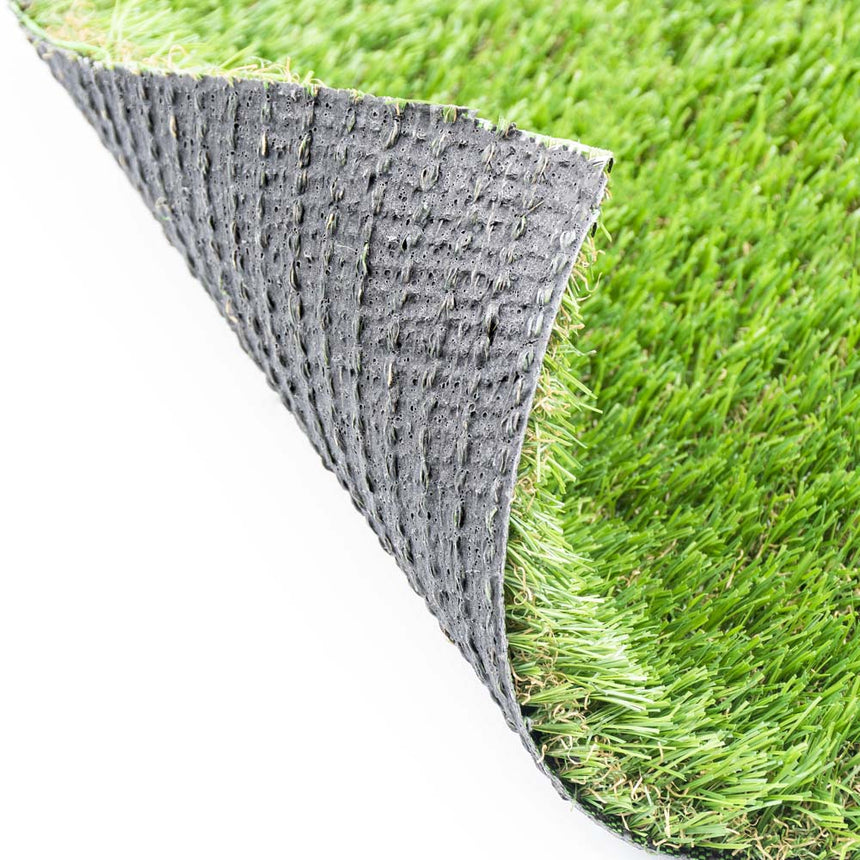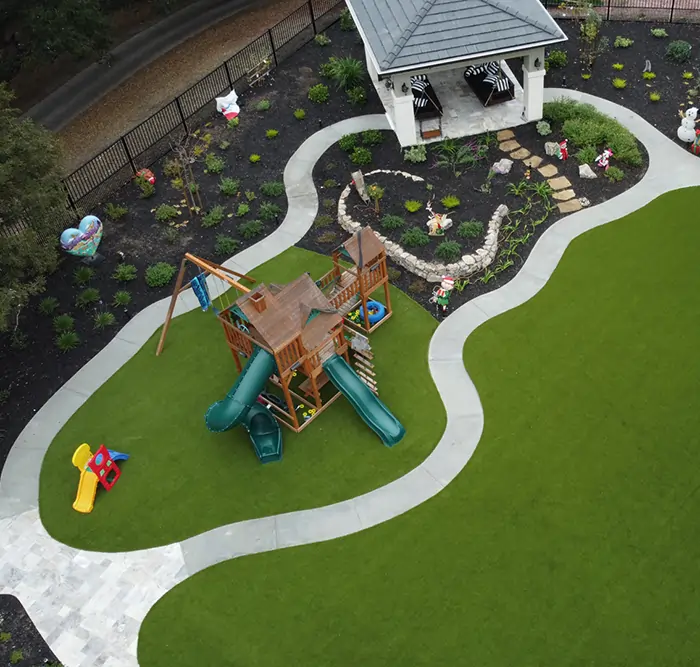Upgrade Your Landscaping with High-Quality Arizona artificial grass Options
Discover the Perks of Artificial Lawn for Your Outside Space
Artificial turf provides an engaging option for enhancing exterior spaces, using various advantages that extend past plain appearances. Its reduced maintenance requirements dramatically decrease the time and resources usually invested on conventional landscaping, while its environmentally friendly qualities add to lasting practices. Furthermore, the lasting durability of fabricated turf ensures that it remains an attractive option over the years. As we explore these advantages even more, one need to consider exactly how such a change might influence not just the look of your landscape yet likewise your general lifestyle and building worth.
Reduced Maintenance Requirements
One of one of the most substantial advantages of man-made turf is its low upkeep requirements. Unlike all-natural turf, which necessitates normal mowing, watering, feeding, and bug control, fabricated turf needs far less effort to keep its visual charm and functional stability. Turf companies mesa az. This equates right into significant time and price financial savings for residential or commercial property proprietors, allowing them to assign sources extra efficiently
Synthetic grass removes the requirement for standard yard care techniques, which can be both labor-intensive and ecologically taxing. There are no yard cuttings to collect or dispose of, nor is there a demand for chemical plant foods or herbicides that can pose a risk to local ecosystems. The occasional cleaning and periodic rinsing to eliminate debris and dirt are generally all that is needed to maintain man-made grass looking pristine.
In addition, synthetic grass is very durable, with the capacity to endure hefty foot website traffic without the deterioration related to all-natural yard. Its strength indicates that property proprietors can delight in a lush, green landscape year-round, no matter climate condition. On the whole, the reduced maintenance needs of synthetic grass make it an eye-catching choice for those looking for a lovely, problem-free outside space.
Environmental Advantages
The ecological advantages of synthetic grass are considerable, contributing to even more sustainable landscaping techniques. In contrast, man-made grass gets rid of the requirement for watering, saving thousands of gallons of water yearly.
Additionally, synthetic grass reduces the reliance on chemical plant foods and chemicals. These chemicals can leach right into dirt and waterways, triggering environmental damage. By going with synthetic grass, house owners and businesses can decrease their environmental effect and advertise healthier ecosystems.
Fabricated lawn likewise mitigates dirt erosion. All-natural lawn can become worn and compacted over time, causing raised runoff and loss of topsoil. The stable surface area of synthetic grass helps preserve soil integrity, making it a safer alternative for sloped locations.
Moreover, the durability of synthetic grass indicates much less frequent substitutes, decreasing waste in garbage dumps. As it usually lasts for 15 to 25 years with correct care, the product's longevity translates right into lower resource usage in time. In recap, artificial grass presents a compelling selection for environmentally aware landscape design.
Cost-Effectiveness
While the preliminary financial investment in artificial turf may appear considerable, its long-term cost-effectiveness comes to be noticeable when considering upkeep cost savings and toughness. Conventional grass require recurring expenses such as mowing, watering, feeding, and parasite control, which can gather dramatically gradually. In contrast, artificial grass gets rid of or considerably minimizes these expenses, providing a much more economical option in the lengthy run.
Artificial turf requires minimal maintenance-- normally just periodic cleaning and rinsing-- allowing home owners to save money on labor and resources. This decrease in maintenance go to these guys not only reduces expenses yet additionally saves water, making it an environmentally friendly option. In addition, the long life of synthetic turf adds to its cost-effectiveness; high-quality items can last for over a years without calling for replacement.
Furthermore, fabricated lawn can raise home value by improving aesthetic appeal and offering a pristine outdoor space year-round. Mesa artificial grass. Home owners can also enjoy the flexibility of synthetic grass for numerous tasks, which can reduce the demand for added landscape design investments. In general, when evaluated versus the continuous expenses related to natural yard, synthetic grass becomes a monetarily smart option that gives long-term value

Longevity and Durability
Fabricated turf is renowned for its phenomenal sturdiness and long life, usually lasting upwards of 15 years with appropriate installation and care. This resilience is mainly attributed to the high-quality materials made use of in its production, consisting of UV-resistant fibers that hold up against prolonged exposure to sunshine without degrading or fading. Unlike all-natural grass, artificial lawn is unsusceptible parasites, conditions, and extreme weather condition conditions, making it a trusted option for different climates.

Property owners can appreciate a dynamic outside room year-round, minimizing the inconvenience of maintenance related to conventional lawns. Additionally, the lengthy life-span of fabricated lawn contributes to its cost-effectiveness, as the first investment settles gradually via reduced maintenance expenses and the evasion of re-sodding or reseeding.
Versatile Design Options
Among the standout functions of synthetic grass is its flexible design options, which enable businesses and home owners to customize their outside rooms to match details visual and useful demands. Unlike natural lawn, synthetic turf comes in a range of shades, structures, and pile heights, making it possible for a customized technique to landscape design. This flexibility makes it possible to develop one-of-a-kind settings, whether for domestic yards, commercial homes, or recreational centers.
Synthetic grass can be effortlessly get more integrated into various design systems, from contemporary minimalist settings to lush, vivid landscapes. It can additionally be conveniently cut and shaped to fit any kind of room, suiting contours, pathways, and intricate patterns. Additionally, synthetic grass is a perfect solution for multi-functional areas, such as play areas, sporting activities fields, and rooftop gardens, where longevity and use are paramount.
With the capability to integrate various grass styles or layer it with various other products, such as gravel or timber, designers can accomplish a aesthetically enticing and practical outside environment. Arizona artificial grass. This flexibility not only improves the visual worth but likewise enhances the total functionality of the area, making artificial turf a smart option Continued for varied applications
Final Thought
In recap, synthetic grass provides various advantages for outdoor spaces, consisting of low upkeep requirements, environmental advantages, cost-effectiveness, resilience, and flexible layout choices. By minimizing water usage and eliminating dangerous chemicals, man-made turf adds to sustainability while enhancing building value. Its capability to preserve a lavish look year-round without the requirement for conventional upkeep makes it an excellent selection for both household and commercial applications. Eventually, synthetic grass transforms landscapes into eye-catching, low-maintenance atmospheres.
Additionally, man-made turf can raise building value by improving curb charm and using a pristine outside space year-round.One of the standout functions of artificial grass is its versatile style options, which enable homeowners and services to tailor their outdoor areas to suit specific visual and functional requirements.In recap, synthetic lawn offers many advantages for outdoor areas, consisting of reduced maintenance demands, ecological advantages, cost-effectiveness, resilience, and functional design choices.